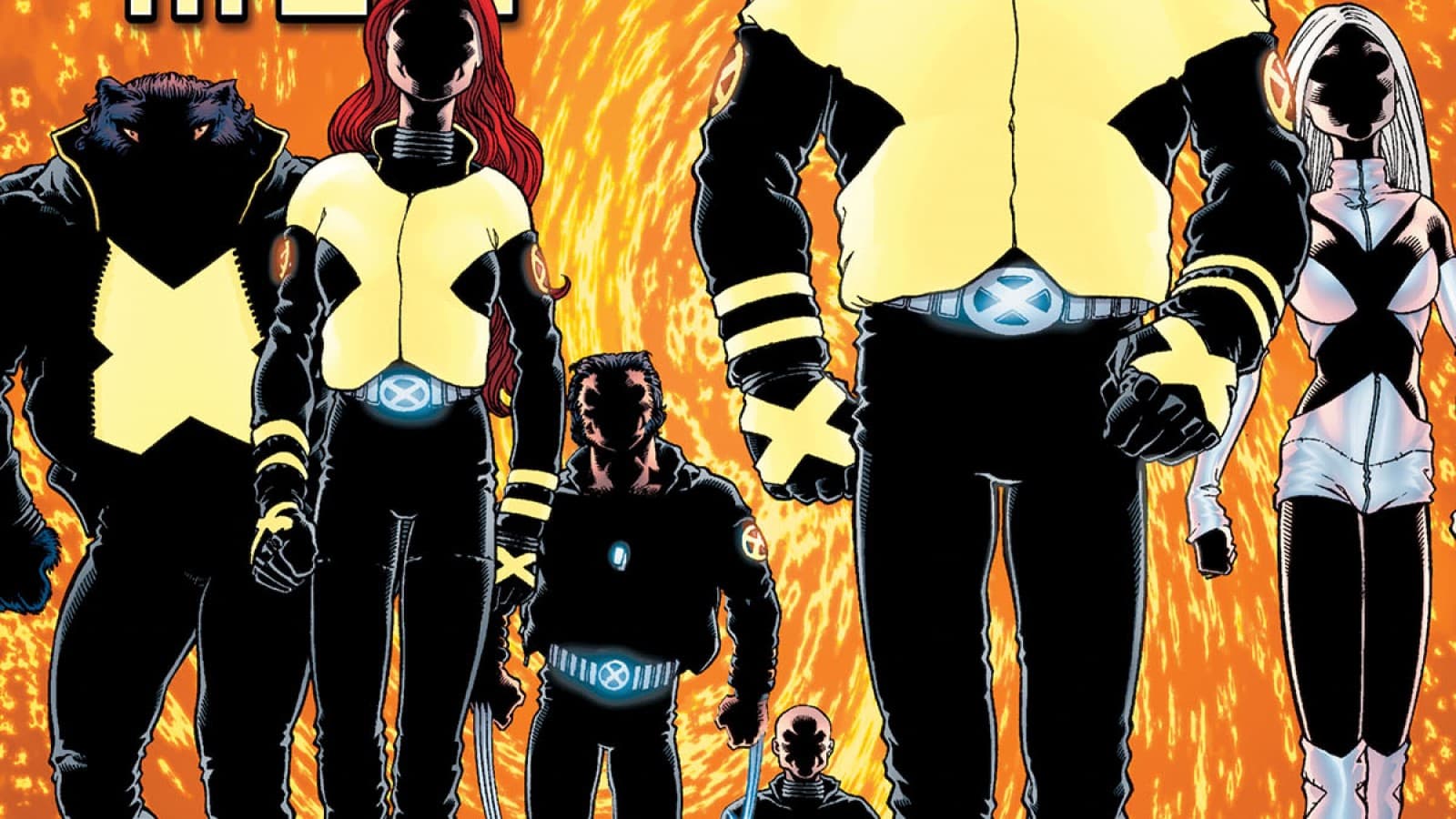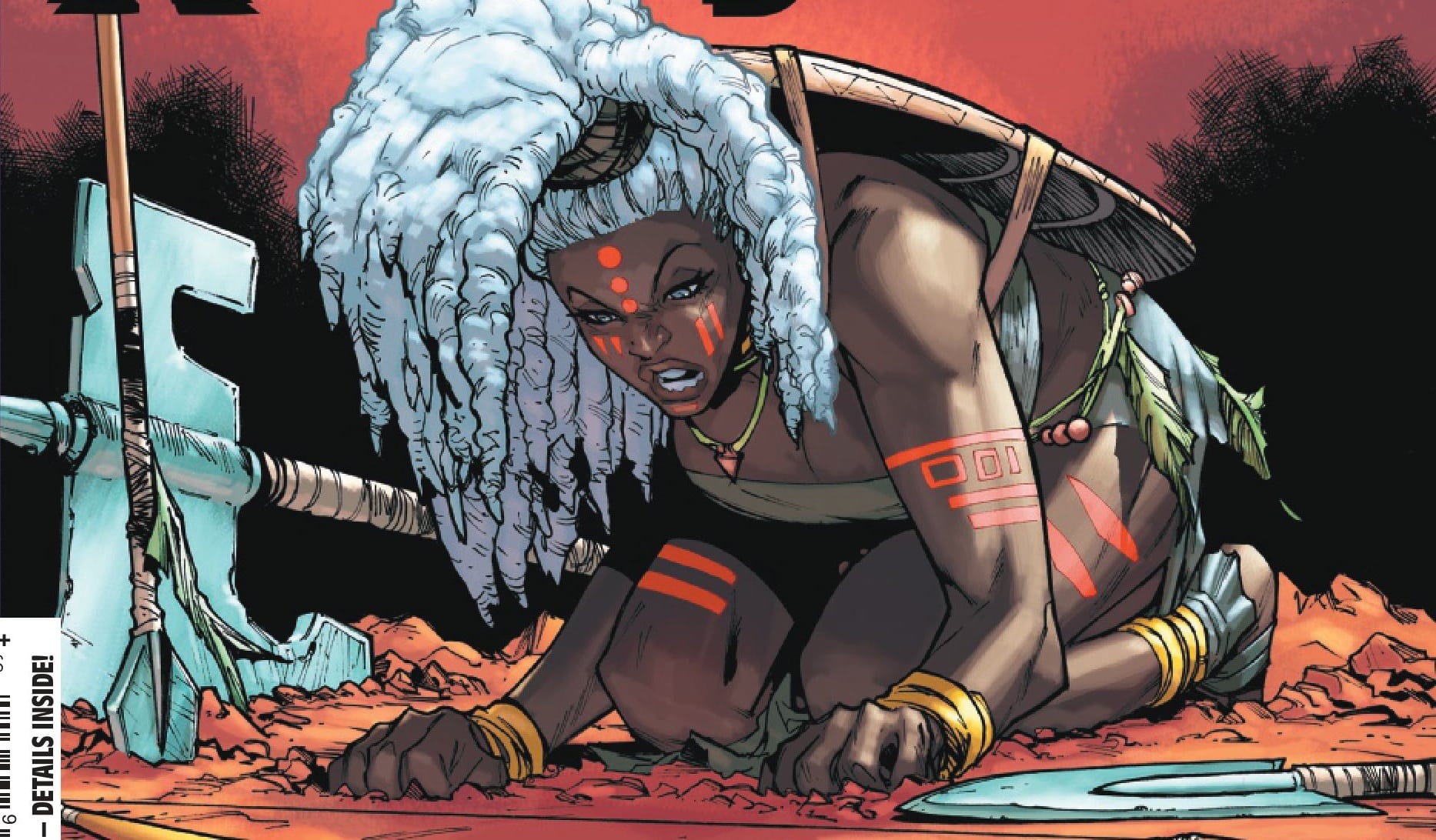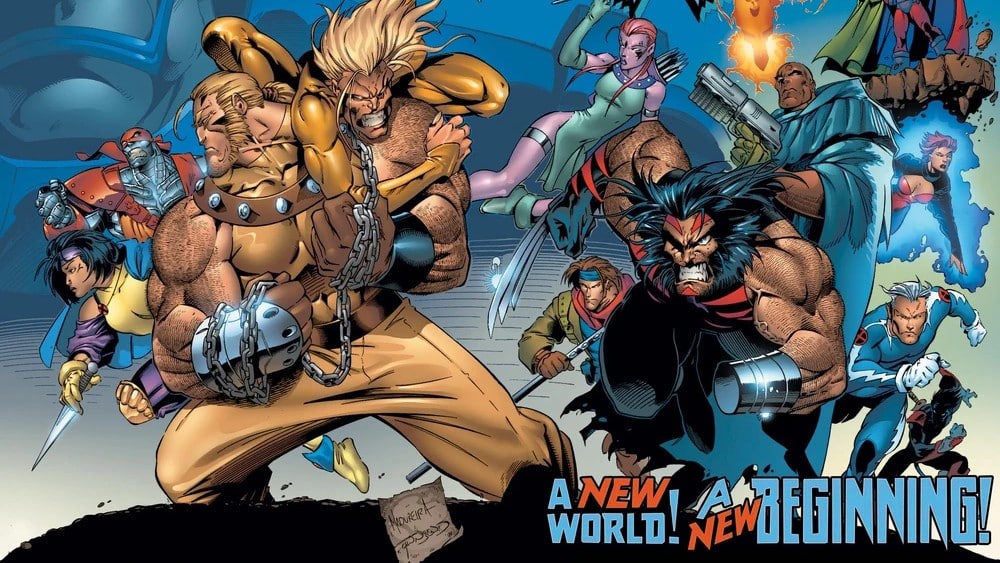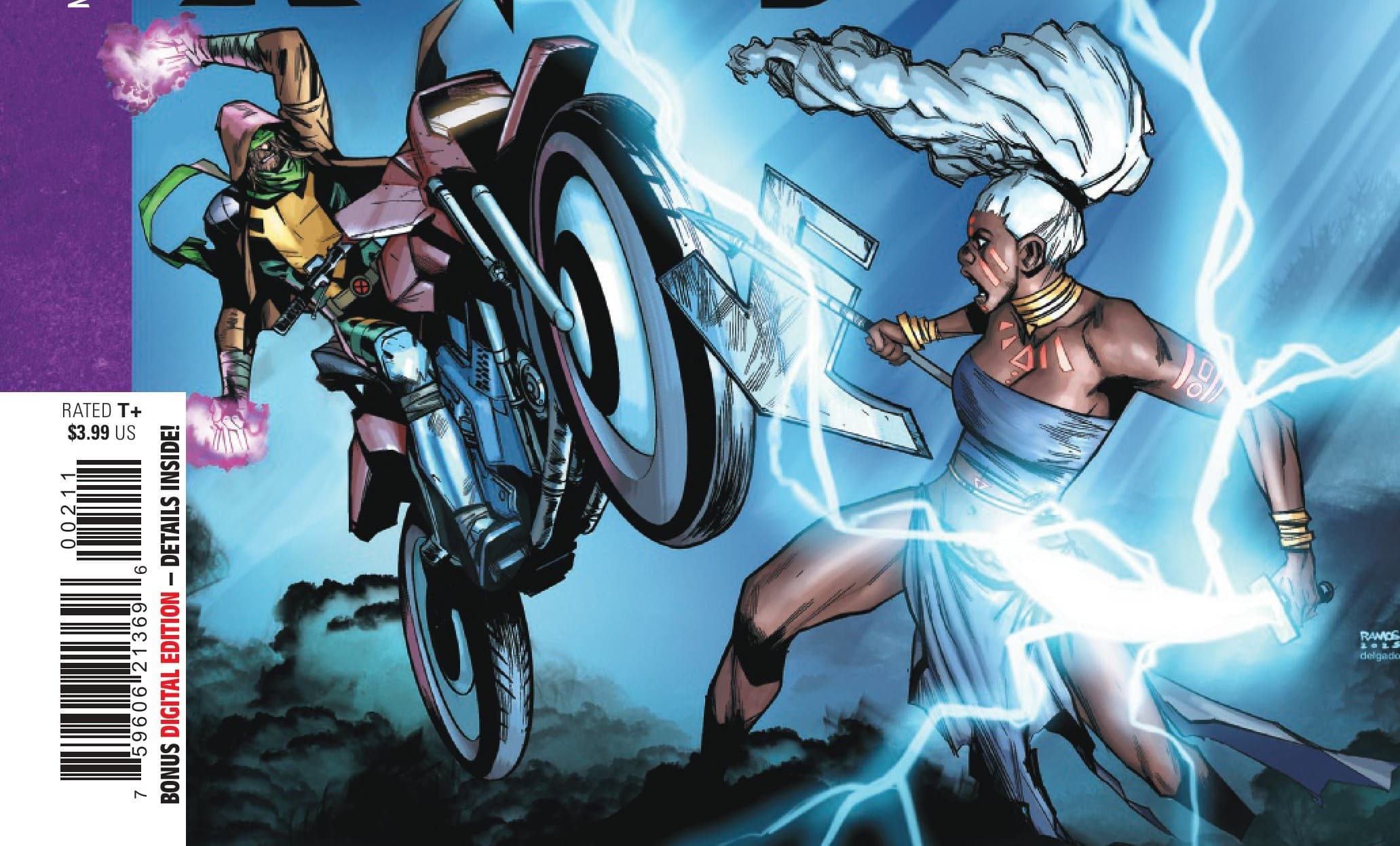Modern X-fans — even those who dislike it — agree that the recent era of X-comics, depicting the rise and now fall of the Krakoan nation-state, is a grand, far-reaching change to mutant history. You might say — as several fans and journalists have all but said — that it represents the greatest X-change since Chris Claremont, Louise Simonson, Dave Cockrum, John Byrne and their other collaborators came aboard in the late 1970s. After Claremont left, in 1991, teams rose and fell. For a while, everybody had guns and pouches and no one had feet. The X-Men put on primary colors and won new, younger fans with an animated TV show, and slipped into black leather for the first Fox X-movie. The comic books sold, and then didn’t: Readers endured an onslaught of status quo resets and wondered whether the series could truly reinvent itself.
Grant Morrison wasn’t one of those readers. They spent the 1990s, instead, getting famous for writing other comics — DC’s The Invisibles, Doom Patrol, JLA. In 2000, Marvel asked Morrison how they would handle the X-Men, and Morrison answered. The new, post-movie X-Men would sport black-and-yellow uniforms. They would refer to earlier continuity without demanding (as so many 1990s comics demanded) readers already be immersed in the lore. They would move (as Claremont and Byrne’s comics did) in self-contained arcs, with slower, soap-operatic subplots chugging along beneath. They would spotlight confrontational characters, including a “new Angel,” a foul-mouthed, ill-treated “teenage tearaway,” “the anti-Kitty Pryde.” Most of all, these comics would “be cool,” with a “kick ass anything can happen feeling.”
Marvel took Morrison up on the offer, and the results were New X-Men #114-154, now known — reductively! — as the Morrison Run, with character redesigns by Frank Quitely and pencils, in the early arcs, by Quitely; an efficient and inventive Igor Kordey; and the since-disgraced Ethan Van Sciver (Leinil Francis Yu penciled the New X-Men annual). These comics stand as the most admired, most dramatic changes to the X-line between 1990 and 2019. They’re monuments, of a sort. They attract imitators, and detractors. How do they hold up today?
Here, and in two essays to follow, we’ll find out. With the Fall of X now (sniff) accomplished, it’s time to see what happened the last time X-comics faced such a big, brilliant threat to their status quo ante. It’s time to Reread the Morrison Run.
Morrison promised scope and scale, and they delivered. Cassandra Nova, Charles Xavier’s evil twin, uses an army of Sentinels to wipe out an island nation of 16 million mutants almost as soon as the series gets going. Later, the Shi’ar Empire threatens to wipe out all life on Earth. But that’s not what made Morrison’s stories stand out: Indeed, threats to all life on Earth, by 2001, had become the vanilla ice cream of Big Two comics, and threats to all mutants no more special than chocolate chip (think Phalanx, Legacy Virus, Apocalypse, Onslaught). Skeptics (like me) might see the near-genocide at the start of the run as a massive, mostly unnecessary fridging. Defenders might say it showed Morrison’s mettle: They weren’t afraid to move fast and break things. Either way, that initial arc, “E Is for Extinction,” looks best when reread for its visual spectacle, or as metafiction, New X-Men telling us that it would, indeed, clear away the old. Professor X even says so, announcing in NXM #116, “This must change.”

The comics went big in another way too, a way that looked awesome then and can turn heads now. The panels themselves got big, colorful, dramatic, with room to show expressions on characters’ faces, as well as stances and backgrounds. Morrison knew (and still knows) how to write for artists. They and Quitely established a look strong enough that Quitely’s de facto substitutes, the more traditional Kordey and the detail-oriented Van Sciver, could keep it distinctive when Quitely needed a break. The people were long, almost Mannerist, except when they looked instead like scrawny teens, or chunky teens, or bulky woodland predators. Heroes wore tight monochrome tops with narrow parallel contour lines. Gone were the interchangeable hypermuscled male physiques of the 1990s, though the all-male art teams still had a ways to go with adult women’s bodies (sigh).
As important as the character designs were the artist-friendly layouts. The standard Quitely page used just four or five wide panels, arranged top to bottom, or else when plots called for compression, a six-panel (never a nine-panel) grid. Colors blended and popped and shined. To read these comics together with other Marvel work from the same era is to see how well Hi-Fi Design (a firm, not a person) handled the still-new craft of digital coloring. Though Morrison knew how to write a speech, they and Quitely could also orchestrate silent panels, telling a story wholly through objects in motion, as in the plane crash and the parachute jump toward the beginning of NXM #115. With NXM #121 they even produced a silent issue, its word-free dreamscape adventures set entirely inside Charles Xavier’s compromised brain. Everything and everyone looked sweeping, amazing, grand.
Except when it looked ugly. Critics — such as the usually spot-on Douglas Wolk — suggest the Morrison run moved away from the durable mutant metaphor (by which mutants stood for various stigmatized peoples and real-world identities), toward ideas about human extinction, transhumanism and human evolution. Emma Frost predicts that Homo sapiens may go extinct within five generations. Cassandra Nova seems determined to wipe out Homo superior. The cult leader John Sublime and his U-Men want to replace both humanity and mutantkind by surgically giving themselves mutant parts. If you want a narrative about overconfident Silicon Valley bozos, would-be Nietzschean übermenschen and Leo Strauss superfans trying to master us all, Morrison has you covered.
And yet the transhumanist dirtbags and human-extinction fans are not the parts of Morrison’s run that stand out visually. Nor are they the strongest new characters. That title belongs, instead, to the weirdos, the uglies, the mutants — and, also, space aliens — who can’t pass for human, who can never be conventionally handsome or beautiful, who would never be center stage in a Fox film (Yes, we know Glob and Angel II were in the movies, but for how long?). NXM #117, “Danger Rooms,” introduces Barnell Bohusk, codename Beak, with a series of wide, crowded panels where the other school-age mutants seem to be laughing at him, or at you. “He can’t slip between cracks in the brickwork or turn to living light like some of the cooler kids,” Hank McCoy tells Professor X. Beak is uncool, and awkward, and even repellent, with bloodshot-looking, bulging eyes, patchy skin, an unathletic physique, a slouch and a lack of self-confidence even compared to most teens.
Charles Xavier, with his usual tact, suggests Beak’s “shyness and psychological damage” might be “corrected by deleting painful memories.” It might be our first hint that Chuck is not Chuck after all but has been possessed by his evil twin. It might, however, be just the sort of thing Charles Xavier does: Sometimes he’s a jerk, and always he’s got one eye on his dream, treating each one of his students as a potential ambassador for coexistence, a power-wielding future public hero, even at the cost of their individuality.

That’s fine if you are, or look like, or want to be, Kitty Pryde, or Jean Grey, or even the glamorous, fuzzy, blue devil-tailed Nightcrawler, who often looks awesome and sexy and cool to readers, as Anna Peppard has made clear, even when he shocks the people he meets. (Some of those readers wrote to Marvel in the 1980s with what Peppard calls “historical thirst odes.” By contrast, the mutants drawn by Quitely and his allies seem designed to shock, or repel, us. Take not only Beak, but Martha Johansson, a wet, pink brain with needles and syringes stuck in it, and Angel 2, who literally spews bile, and who breaks out in boils all over her back before her wings emerge. Or take Ao Jun, from the 2001 New X-Men Annual, whose skin flakes turn into golems he can control. Even the X-Men think that’s pretty gross.
Morrison goes for the same effects, when they can, with preexisting X-characters. People have ugly sides, or ugly twins (Cassandra being Charles’ ugly twin). Even the famously beauty-conscious Emma Frost gets a big bandage over her nose (which Kitty would copy, 20 years later, in Marauders). Hank looks more Beastly than ever before: enormous, hunched-over and hairy, like an azure lion on the prowl. In fact, it’s his beastly appearance that causes his longtime girlfriend Trish Tilby to break up with him. “You’re still the same lovely Hank inside,” she says. “But you look at me like I’m prey.” The Shi’ar Superguardians aren’t Morrison’s creation, but they, and Quitely, and especially Igor Kordey, go to town on the most important Superguardian in the run, the shapechanger called Stuff, whose true form is a gloppy, puke-green hovering ovoid with a giant mouth, like a pillbug crossed with a hungry cocoon. Hi-Fi Design’s digital colors make the gooey bodies especially gooey, the boils and golems more like real skin.
In other words: Morrison’s plots tend to focus on characters, new and old, with visible, sometimes repellent, disabilities. Normal-looking baseline human beings, and even some mutants, don’t want to see them, much less accept them as stars. Xorn, in a buried pun, is a man in a mask who hides a literal star (He will turn out to be someone else, but not yet). There had been unattractive, or horror-themed, mutants before — like Marrow, or Maggott — but not comprehensively; not in the front of the line. And that’s why the mutant metaphor stars, and startles, in Morrison’s run after all: It stands out for its exploration of non-passing mutants, of physical, visible difference, even when that difference does not come with the obvious compensation, or coolness, or physical power, of a Nightcrawler, or even a Wolverine.

Morrison’s villains — in this first third of the run — want to abolish deviant bodies, or control them, or conduct surgery on their own bodies to make them perfect. Their problem is not that they want to change those bodies, but that they want to rise above everyone else, to rule a clean, comprehensible, sterilized world. The most committed U-Men even wear pressure suits so as not to breathe “polluted” air. Anti-mutant prejudice is prejudice against people who can’t pass, who would bring shame on their parents or friends. We even meet, in NXM #119, a parent who murdered his child rather than accept a visible mutation (shades of the current Montana state Legislature). Morrison’s scariest villain, Cassandra Nova, operates principally through projecting shame. She tries to lock Cyclops into the “black bug room” of his depression: “All that’s left of you is pathetic emotional debris.” Scott knows how to withstand that kind of psychic assault, but Shi’ar heroes melt down, especially Gladiator, whose “powers rely on self-belief.” Let the world tell you you’re worthless, and need to hide away, or destroy yourself, and you won’t be much use to anyone else. Shame is the problem that mutants need to face first.
As usual, the mutant metaphor here works best for disability, autism, trans lives and other “horizontal identities” (Andrew Solomon’s invaluable term) that set you apart from your parents. It works middlingly well for sexuality: Most of the people in this first part of Morrison’s run have limited love lives, unless you count Hank, who comes out as maybe-gay in NXM #125, which celebrates his confession with literal fireworks (No, really, see the panel). The metaphor does not work well for religion or race (which most of us share with the people who raised us), though Morrison does remind us how racial pseudoscience functions: The U-Men claim mutants “don’t feel pain like we do.” But usually, and specifically, Morrison and their art team want to say something about horizontal identities, especially those that Claremont’s X-Men took on.
“Everyone wants to be a persecuted minority,” one journalist complains in the school visit gone wrong that takes up much of NXM #123. “Now we have mutant celebrities and corporate CEOs,” another one muses. “There are even people pretending to be mutants just to seem cool to kids.” (Cue current debates, if that is the word, over who counts as autistic, who gets to be trans.) Claremont’s human villains were either devious power-seekers or straight-up bigots. Morrison’s want a reversal of values where the ugly are beautiful, “uncool is the new cool” and “the weird are kings,” as one teenage incel John Sublime fan announces. Then the police take him down. Both the police and the teenager are in the wrong: Morrison wants a world with no kings, more acceptance and far less shame.
Here, Morrison takes up explicitly the most compelling case against X-Men stories in general: the claim that these stories allow white, male and otherwise majority-party readers to imagine that they too are victims of discrimination, and deserve more power than they have. Instead, Morrison’s heroes envision a world where no one seeks power over anyone. They seem to want the world Jean Grey says she wants, when she speaks to the journalists at the school, before the Shi’ar attack ruins the moment. “Here at the Xavier Institute,” she says, “we still believe in the future,” a future where students “take care of themselves and other people,” a future where teamwork and collaboration not only defeat selfish bad guys but build up something like “a mutant culture,” “an outpost of the future, here and now.” Mutants in that future will not have, or seek, or need — as the psychologist Ethel Person put it — “power over”: They will instead find universal “power to.”
And that future almost arrives. The existence of mutant culture, mutant neighborhoods, mutant fashion and so on would be a signal contribution the Morrison run made to the Marvel Universe; only now, on Krakoa, have we seen it return. By NXM #126 — the end of the first volume in the three-volume collection, the end of the Shi’ar and Cassandra arcs — Morrison had established their ethical universe, and Quitely their signature look. The mystery of Xorn, the menace of John Sublime, the complex love lives at the Xavier institute, and the problem of aggrieved teens who think their minority status gives them the right to power (“power over”): All these would remain, and they — along with the rise and fall of mutant culture — are stories for another time: for part two of Reread the Morrison Run.

Disclaimer: As an Amazon Associate, ComicsXF may earn from qualifying purchases.
Stephanie Burt is Professor of English at Harvard. Her podcast about superhero role playing games is Team-Up Moves, with Fiona Hopkins; her latest book of poems is We Are Mermaids. Her nose still hurts from that thing with the gate.






